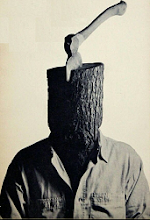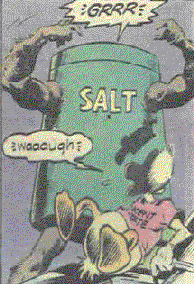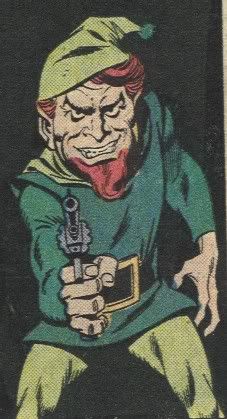Cool Moments in Comic Book History: Ambush Bug Punches Continuity in the Nuts
Picture an audience with him. "What went before must be respected," he wheezes to you, "and all that follows must logically mesh with earlier tales." He coughs up a phlegm ball. "We will make all actions coherent! We will force rationality! Even if we have to rewrite history to do so!" He then asks you to please swab away the streams of sweat that trickle into the folds of his nine chins.
To oppose this monster came a hero: Ambush Bug.
The Bug didn’t care much for continuity, mostly because he knew he was a comic book character. Das Bugg, through his handful of miniseries and one-shots, extended his middle finger towards the very idea of comic book continuity.
He punched that fat man right in the sack. And for that, we owe him a debt of gratitude.
Irwin Schwab, Ambush Bug, began as a minor pest to Superman in the early eighties, a gift to all comicdom from Keith Giffen and Robert Loren Fleming. Quickly the Bug grew to become the patron saint of Not Taking Superhero Funnybooks Seriously, and one of comics’ true Pillars of Awesomeness.*
The Bug's tales were many and strange. He battled against Quantis, the Koala that Walks Like a Man. His most formidible foe was a living sock named Argh!yle. One of the many times the Bug died, he was sent to hell and damned to dance the jitterbug with fat people for eternity. (He later returned to life when he noticed that a door marked “Exit” was right next to him. It opened into downtown Metropolis. Thus was the Bug reborn. Again.)
Then came The Event. In a moment of supreme comic coolness, Ambush Bug, gave comic continuity the greatest nut-punch it ever received.
In the Ambush Bug Stocking Stuffer (1986), AB was on a mission. His partner, adopted son, and inanimate object, Cheeks the Toy Wonder, had come back from the dead as a zombie.** AB hunted for the wee bugger as Cheeks tore a swath through the city, devouring other stuffed animals for sustenance. Suddenly, the Bug appeared out of nowhere, grabbed Cheeks and disappeared.
Then the story continued as though that one page had never happened.
Until…we found out the horrible truth!
Late in the book, AB found out that Cheeks could be found on page eighteen*** (“Oh boy! That’s when the book was still funny!” he noted). Using a time machine, he hurled himself backwards in pages. He went back to page eighteen, grabbed the cannibal zombie toy he’d adopted as his son, and returned to the later pages of the comic.
Amazing.
He violated not only between-issue continuity and internal story continuity, Ambush Bug shoved a sharp stick in the eye of storytelling continuity itself.
A great moment in comics.
Jonni DC, Continuity Cop and frequent Bug nemesis, had a stroke.
And it was sweet.
(The Bug’s action, not the stroke.)
(Strokes aren’t funny.)
(Unless they’re metaphorical.)
(Like “oh man, my boyfriend had a stroke when he saw what Steinbrenner’d done!”)
(Those are hilarious.)
(Granted, not as hilarious as a giant jelly doughnut that embarks upon a career as a country singing star and makes it to the big time, only to realize just as he takes the stage for his first night at the Grand Ole Opry that he’s not wearing any pants.)
(Which is funny even though a giant jelly doughnut doesn’t have legs, because we’ve all had that dream about being a fried cake in Nashville and realizing that we forgot our pants just as the curtain to “Newcomer Nite” opens, and we're afraid that our vocal stylings will be overshadowed by our status sans pantalons.)
(You know the dream. Some of you probably dreamed it last night.)
(I did.)
(I managed to get through a set of Willie Nelson songs before the hot lights melted my glazed topping into a sticky sweet syrup.)
(Because I’m a professional, dammit.)
Anyway, to sum up: Ambush Bug was the greatest, and that was one of his finest hours.
-------------------------
*The other Pillars of Awesomeness will be revealed in later blog entries, as I get around to making up a halfassed list. The only slam-dunk beyond the Bug: The Adventures of Barry Ween, Boy Genius. Barry’s staggering awesome-osity makes the angels weep. It is upon these mighty Pillars that all that is good in comicdom stands. Or some crap like that.
**Cheeks died a lot too.
***I think it was page eighteen. I’m too lazy to rummage in the closet and check. My comic longboxes are stacked five high in a closet and poorly labeled.
Click here to read more!







